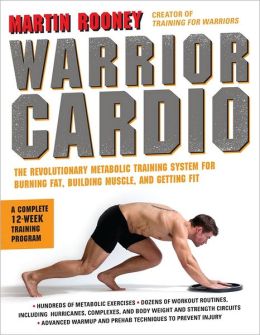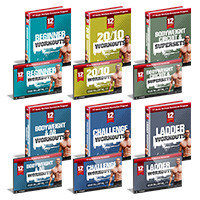Good Advice For Training First Rounders

If you want a little bit of background on him jump back to part 1, and you will understand why I am excited to have him be one of our guest speaker at the third Turbulence Training Summit in San Diego on the 21st and 22nd of June in 2013.
Click here to listen to the call.
***************************
Craig : You started out, at least from what I know, what was the original book you had for MMA training guys? I have it, warrior something? MMA Training for Warriors, is that it?
Martin: Yeah, the first original book, I self wrote it back in 2000-2002 because there was nothing on the topic. It was called Training for Warriors, the Team Renzo Gracie Workout because I was training the Gracie team and I had gone over to Abu Dhabi and trained with the Prince of Abu Dhabi. I just started writing about the stuff that I was finding.
What’s interesting about it is I didn’t really have proof or real scientific evidence or a background for what I was doing, but I knew what I was doing was working through trial and error. It’s kind of how we built the company, so it’s an interesting story.
Back then we were kind of pioneering that industry, especially in MMA where no one was training fighters. Fighting wasn’t even big, it was still banned off TV at that point, so I was really out there on an island, taking chances, trying different things, and finding what worked and then wrote about it. That kind of really launched the entire Training for Warriors company, which now we work with anybody.
The really neat part about the history is this was born from training the greatest fighters in the world and making them better, so you don’t have to be a warrior to get punched in the face or to want to be able to train like one, but you have the confidence that you know that this is the stuff that could make you everything that you want to be.
That was the original book that I had put together.
Craig: Fantastic. I was just going through my old e-mail archives and our first e-mail correspondences were in the fall of 2004. I interviewed you way back then for my old website, CBathletics.com. It was a great interview, but that was a long time ago. It took about eight years until we finally met. It’s crazy that it’s been that long. It’s funny how things work out.
Another thing I bought of yours was some of the speed DVDs from Perezie. Those were awesome and I really love the training montages that you had in those.
What have you learned over the last 10 years in training athletes that can maybe apply to training regular people for maximum results? You’ve brought that, you’ve really done that crossover. What can you say is really great for athletes, but also is really great for the average person who wants to get lean and have a great workout?
Martin: I’ll tell you, that’s a great question Craig because I’ve found what is good form, and then I’ve also found what doesn’t work. Training the high level athlete has always been a passion of mine and it’s been exciting, but let’s face it. All the people who are listening right now, especially the trainers and coaches, there just aren’t a lot of high level athletes.
The odds of everybody training first rounders in every sport is very, very small, but the odds that you have an overweight adult or you have a weekend warrior who wants to get in better shape, that’s your bread and butter.
Those are the people you’re going to be working with. The great news is there are many, many things that you can pull from training the high level athlete to those people so that they feel cool and they feel like they’re doing great things.
I would also caution people that there are a lot of things that those people don’t need to do that a professional athlete may prepare for. High intensity agility sessions and really working technically on agility and moving side to side and explosive plyometrics and jumps, I reserve a lot of that stuff for that high level athlete; that athlete that really needs to either change their contractile potential or the ultimate speed of their movements because there’s an element of danger with some of those movements.
Not only that, but those kind of movements and things aren’t always required by the regular person. Although they look cool, I’ve just seen too many people either injuring themselves with box jumps or trying to flip a 400 pound tire that ultimately, if you ask them the question, “Why did you just do that?” if you don’t have a very good answer, then you probably don’t want to be doing it.
What I would say is advanced warm ups that they can feel like they’re doing, speed training where you’re teaching them actually linear speed techniques and sprinting. You can do light level plyos and jumps, and definitely all the different strength training techniques that could be used with an elite athlete are available for the average person, as well. I’ve been able to cross over very, very well and remember, I’m in the trenches.
For 10 years I was also training housewives all the way down to seven year olds, besides the world class athlete. Everybody benefitted from the stuff that I was doing for them, I just had to know how to really dial it down to make sure that I also remembered that that housewife or that seven year old is not a world class athlete yet, and you have to really know how to apply that.
Without a doubt, you definitely want them thinking they’re doing cutting edge stuff.
The training has to be exciting and new, it has to involve different tools and variety that keeps their mind stimulated. All of these things are things that are available from the professional athlete, it’s just I’ll also caution everybody out there just like I said originally, you have to know how to use it.
EXACTLY! This is why I developed the Home Workout Revolution.
Not only is it a complete FAT BURNING system. It has follow-along workout videos that will get you through every workout with proper form and expert instruction.
Tomorrow ,we’ll hear more from Martin and the benefits warming up before every workout.
Craig Ballantyne, CTT
Certified Turbulence Trainer